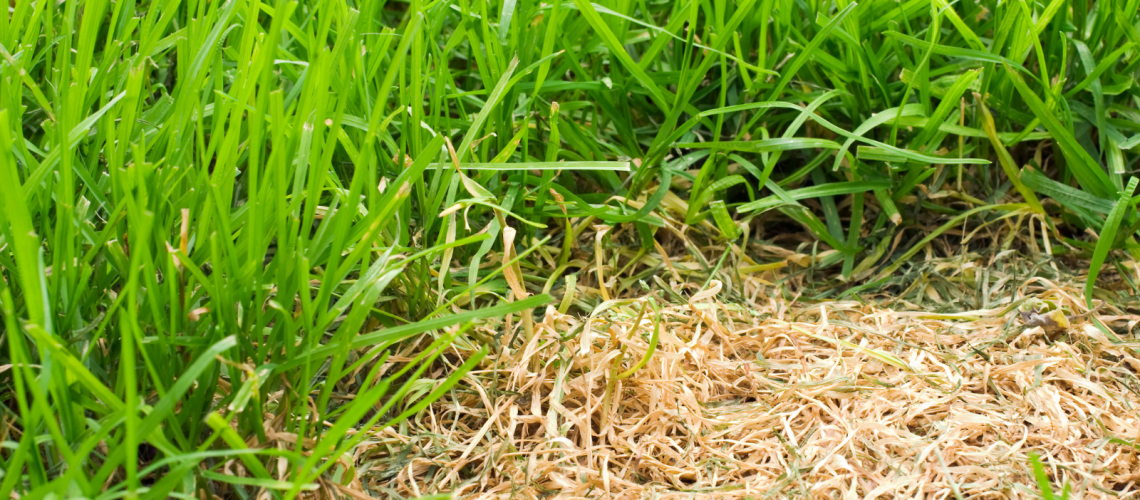This past summer was one of the hottest on record in North Texas. On top of that, we were also without rain for an extended period of time during those peak temperatures. Many of our lawns took a beating. For those who lost all or parts of their turfgrass, here are seven smart ways to replace your turf so you won’t be in the same predicament next summer.
1. Native Plants or Pollinator Garden
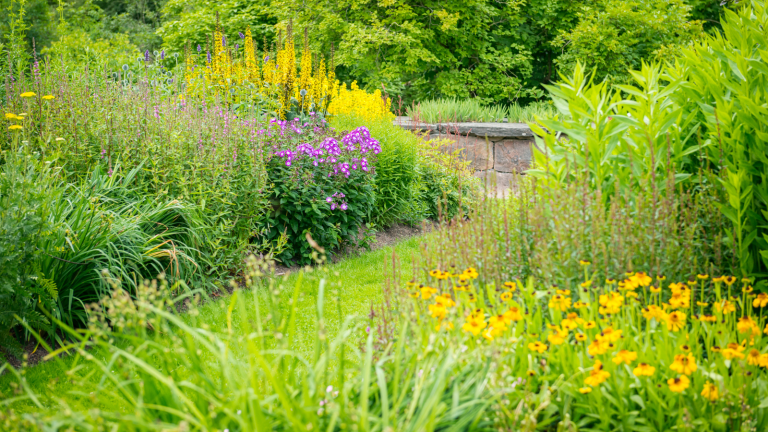
Create an ornamental bed or pollinator garden by planting native plants. Native plants are low water use on a normal basis and drought resistant during dry times, plus they attract butterflies, bees, and birds.
Native plants need no supplemental irrigation to live since they grow here naturally, but often perform well and create an explosion of blooms when given a little extra water. Check out our tips on creating a pollinator garden and resources to help choose and find native plants on our Pollinator Page.
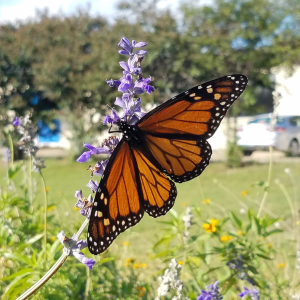
2. Outdoor Living Space
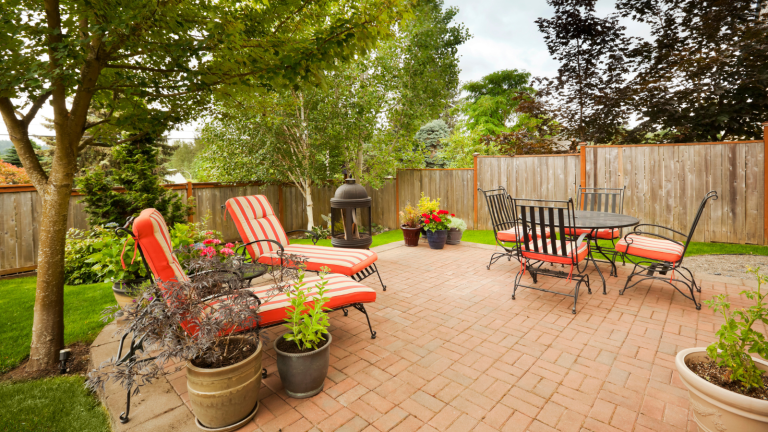
Design a fun outdoor living space to use during the three milder seasons here in North Texas. Outdoor living spaces built on materials that allow rainfall to penetrate will still allow water to soak into the soil while creating an area that no longer needs watering like the grass that was previously there. Consider any type of use from a small sitting area to a full kitchen and dining space.
3. Plant a Tree
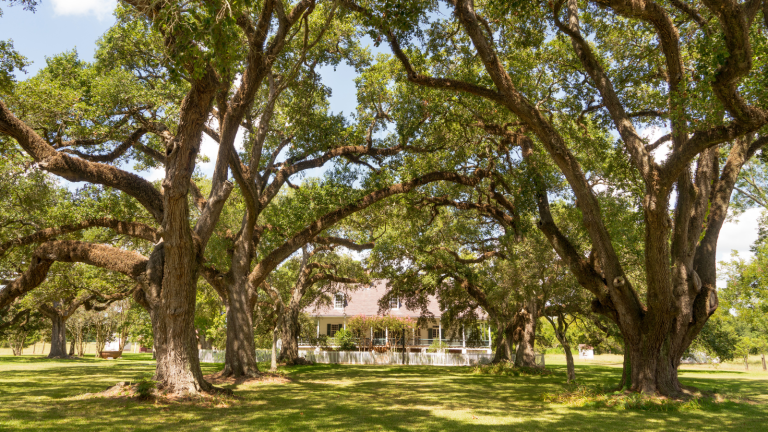
If you have a large, hot, full sun yard, plant a tree to create some well-needed shade. A large shade tree can reduce temperatures by around 20 degrees in the air and on surfaces beneath the tree.
Temperature reduction by trees can help cool your house, shade the soil surface so less water is evaporated, and help combat the urban heat island effect. For a list of trees that thrive in our hot summers, visit TxSmartscape.com.
4. Wildflower or Prairie Patch
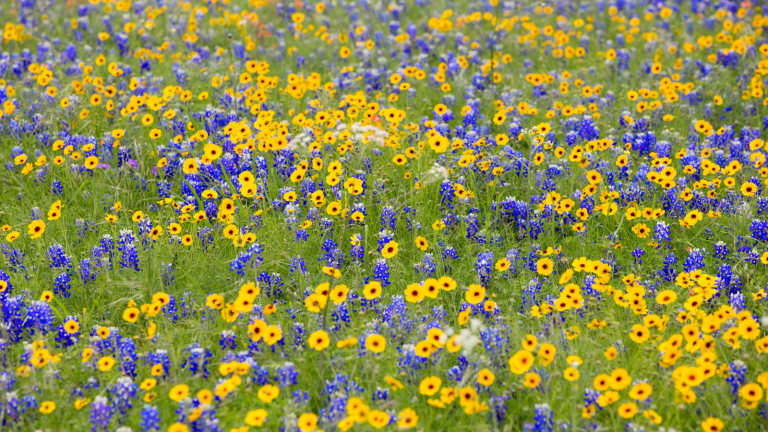
Make a little patch of wildflowers or prairie in your yard to have a more natural-looking feature that attracts bees and butterflies. A native wildflower patch is low maintenance, low water use, and drought resilient, all while offering a diverse and lively addition to your garden. Check out Native American Seed for a great selection of wildflower seed mixes made from 100% native Texas plants.
5. Ground Cover or Shade Garden
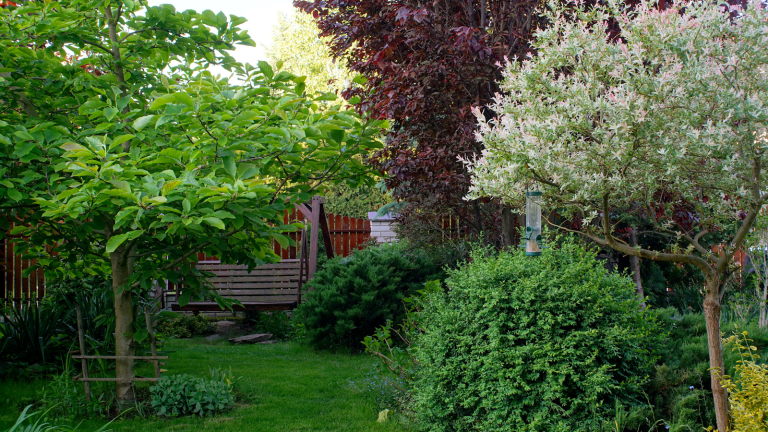
If the area where you lost turfgrass is in the shade, a ground cover or assortment of native shade-loving plants may be the best replacement. Ground cover can be low maintenance and usually does not take much water since it is in the shade.
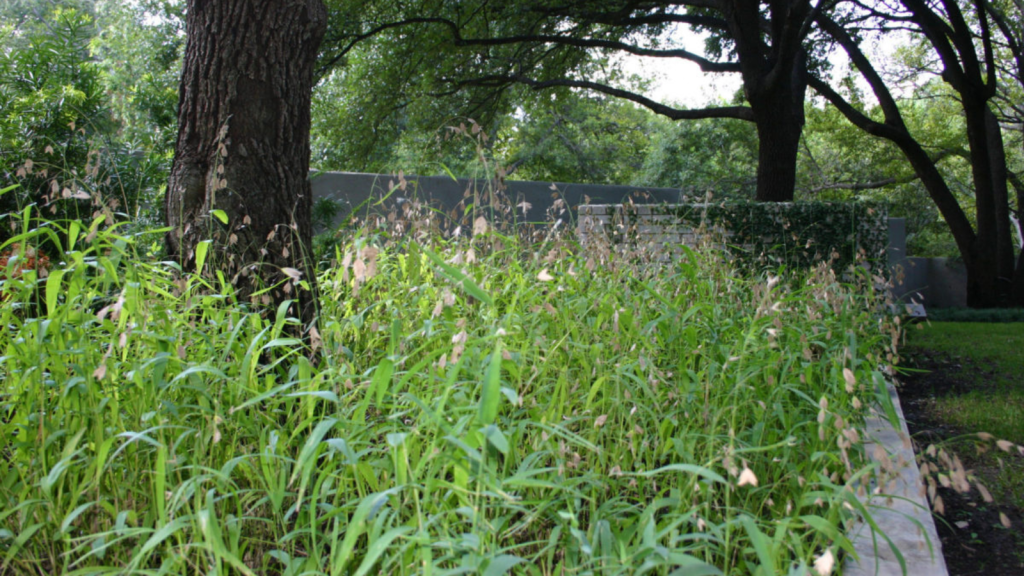
The same goes for many of our native Texas shade-loving plants that include small shrubs like Beautyberry and grasses like Inland Sea Oats. Use the North Central Texas Plant List from Lady Bird Johnson Wildflower Center or Txsmartscape.com and choose full or part shade, depending on your situation.
6. Rain Garden, Bioswale, or Dry Creek Bed
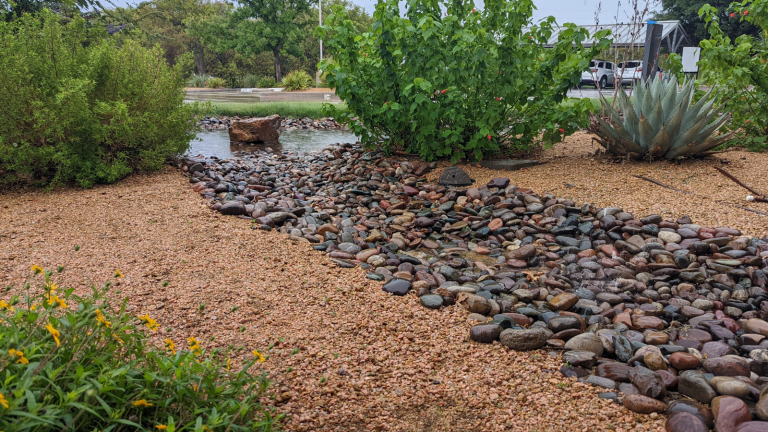
If your yard is prone to flooding when it does rain, if rain pools in a dead spot in your lawn, or if you have a steeply sloped yard and want to keep more rainwater, consider a rain garden, bioswale, or dry creek bed.
Rain gardens are depressions, planted with vegetation, designed to hold stormwater runoff. Dry creek beds are channels or depressions, filled with rocks, designed to convey stormwater runoff. Bioswales are basically a combination of the other two; they convey stormwater and are planted with vegetation. All of these features slow down, reduce the volume of, clean, and help move stormwater where you want it.
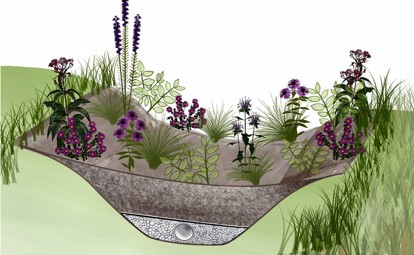
7. Buffalo Grass
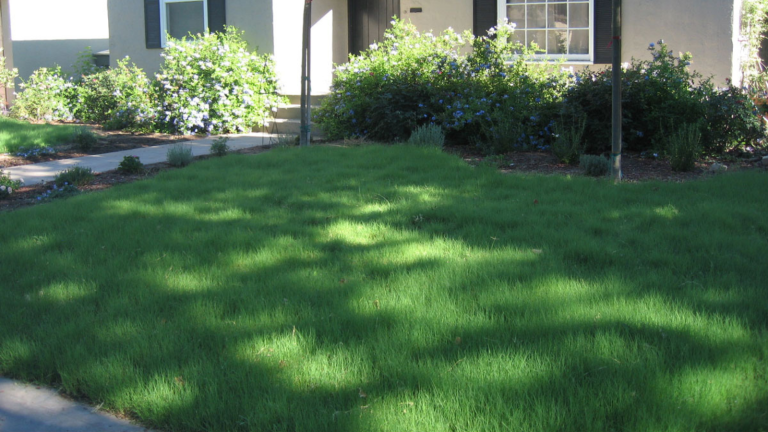
If the area of lawn that has died needs to be replaced with turfgrass, use a more resilient grass so it doesn’t just die again next summer.


